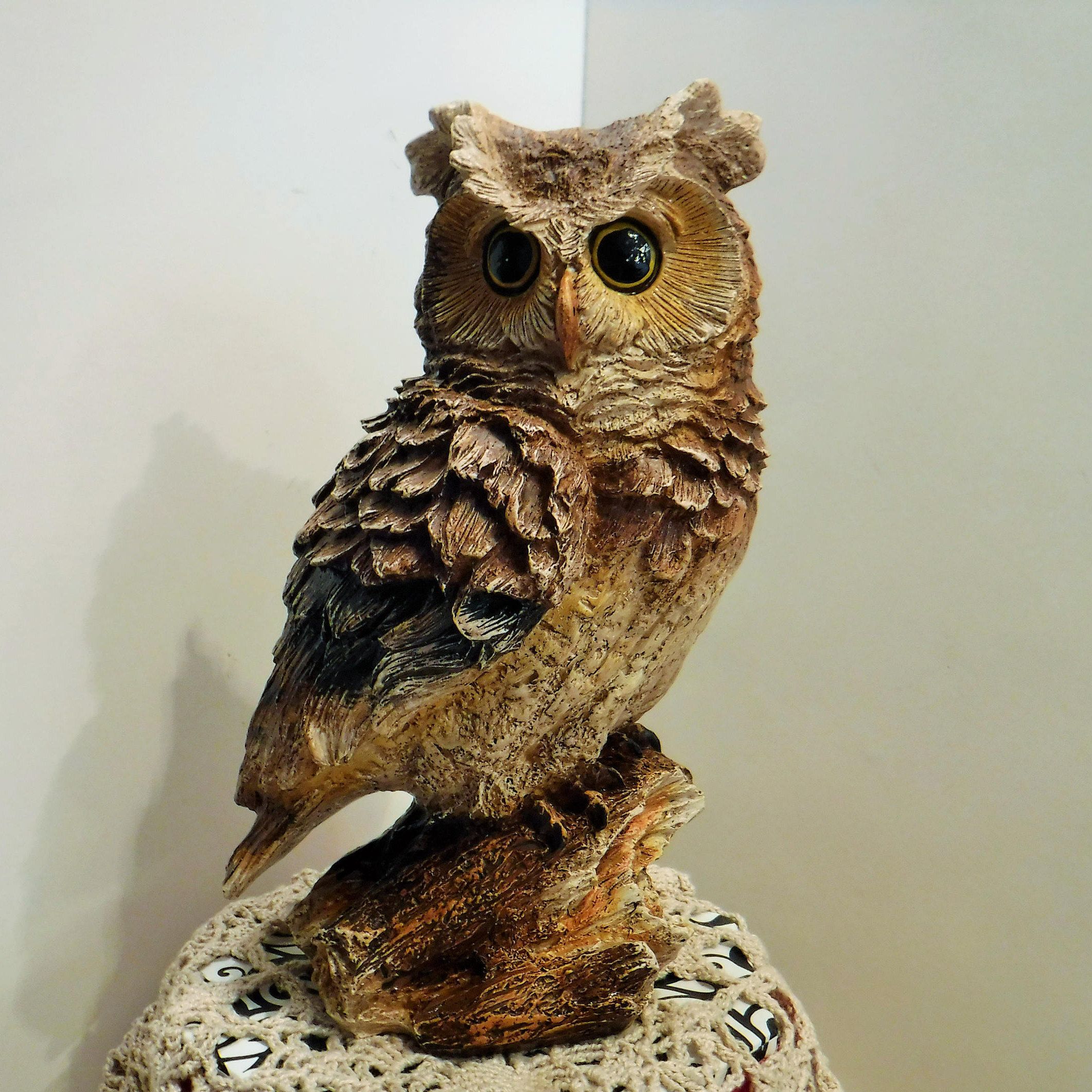Italian alabaster, a mineralogical whisper from the earth, has captivated artisans and collectors for millennia. More than just stone, it’s a translucent canvas, imbued with the potential to capture light and shadow in a breathtaking dance. The story of your vintage owl statue is intrinsically linked to this remarkable material, its inherent qualities elevating a simple decorative piece to a veritable objet d’art.
A Geological Genesis: Unveiling the Alabaster’s Origins
To appreciate the artistry, understanding the genesis of Italian alabaster is paramount. Formed through the slow, patient deposition of calcium sulfate from evaporating waters, primarily in the region of Tuscany, specifically Volterra, alabaster presents itself in geological strata, waiting to be unearthed. This isn’t a fiery birth like granite; it’s a quiet accumulation, a testament to the power of subtle, persistent processes. The presence of trace minerals imparts the characteristic veining and subtle color variations that make each piece of alabaster unique, a geological fingerprint etched in stone. Imagine eons compressed into a single, touchable form.
Volterra: The Epicenter of Alabaster Craftsmanship
Volterra, a hilltop town steeped in Etruscan history, is synonymous with Italian alabaster. For centuries, this region has been the nucleus of alabaster extraction and carving, a heritage passed down through generations of artisans. The skills required to transform a raw block of alabaster into a refined sculpture are considerable, demanding both technical proficiency and an artistic sensibility. These artisans are not mere craftsmen; they are custodians of a tradition, interpreters of the stone’s inherent possibilities.
The Alabaster Owl: Symbolism and Serendipity
The owl, a creature often associated with wisdom, mystery, and nocturnal grace, lends itself beautifully to alabaster’s subtle luminescence. The translucency of the material allows light to penetrate the form, creating a soft, ethereal glow that accentuates the owl’s features. The choice of alabaster is not arbitrary; it’s a deliberate enhancement of the owl’s symbolic weight. Consider the contrast: the stone, a symbol of permanence, sculpted into the image of a creature often associated with the ephemeral night.
Techniques of Transformation: From Quarry to Curio
The journey from raw alabaster to finished owl statue is a meticulous process. First, the alabaster is carefully extracted from the quarry, a task that requires skill and precision to avoid damaging the delicate stone. It is then transported to workshops where artisans use a combination of traditional hand tools and modern machinery to shape and refine the form. Rasps, chisels, and polishing compounds are employed to achieve the desired level of detail and smoothness. The surface is often treated with wax or other sealants to enhance its luster and protect it from damage, a final act of reverence for the material.
The Allure of the Antique: Patina and Provenance
The term “vintage” implies a history, a past life that imbues the owl statue with a unique character. The patina that develops on the surface of aged alabaster, a subtle discoloration and accumulation of microscopic imperfections, tells a story of exposure to light, air, and handling. This patina is not a flaw; it’s a badge of authenticity, a testament to the passage of time. The provenance of your owl statue, its documented or inferred history of ownership, further enhances its value and appeal. Imagine the hands it has passed through, the shelves it has graced, the stories it has silently witnessed.
A Study in Style: Decoding the Design
The stylistic details of your alabaster owl statue can offer insights into its period of creation and the artistic influences that shaped its design. Is it rendered in a realistic style, with meticulous attention to anatomical detail? Or does it exhibit a more stylized or abstract approach, emphasizing form and texture over accurate representation? The presence of Art Deco influences, for example, might suggest a creation date in the early 20th century. Conversely, a more classical style could indicate an earlier origin. The subtle curves and lines whisper tales of artistic movements long past.
The Value Proposition: Beyond Monetary Worth
While the monetary value of your vintage alabaster owl statue is certainly a factor to consider, its true worth lies in its aesthetic appeal, its historical significance, and its ability to evoke a sense of wonder. It’s a tangible connection to a rich artistic tradition, a reminder of the enduring power of human creativity. Its value transcends mere currency; it resides in the intangible realm of beauty, history, and personal connection. Consider it an investment, not just in an object, but in a narrative.
Caring for Your Alabaster Treasure: Preservation and Protection
Alabaster, despite its apparent solidity, is a relatively soft and porous material. To ensure the longevity of your owl statue, it’s essential to handle it with care and protect it from damage. Avoid exposure to excessive moisture or direct sunlight, which can cause discoloration or cracking. Clean it gently with a soft, dry cloth, avoiding the use of harsh chemicals or abrasive cleaners. Regular dusting and occasional waxing will help to maintain its luster and protect its surface, ensuring that it continues to radiate its subtle, captivating glow for generations to come. Proper care transforms a simple possession into a cherished heirloom.
In conclusion, your vintage alabaster owl statue is far more than a mere decorative object. It’s a tangible link to a rich history of artistic craftsmanship, a testament to the enduring beauty of natural materials, and a silent observer of the passage of time. It embodies the art of Italian alabaster and its inherent timeless qualities.
